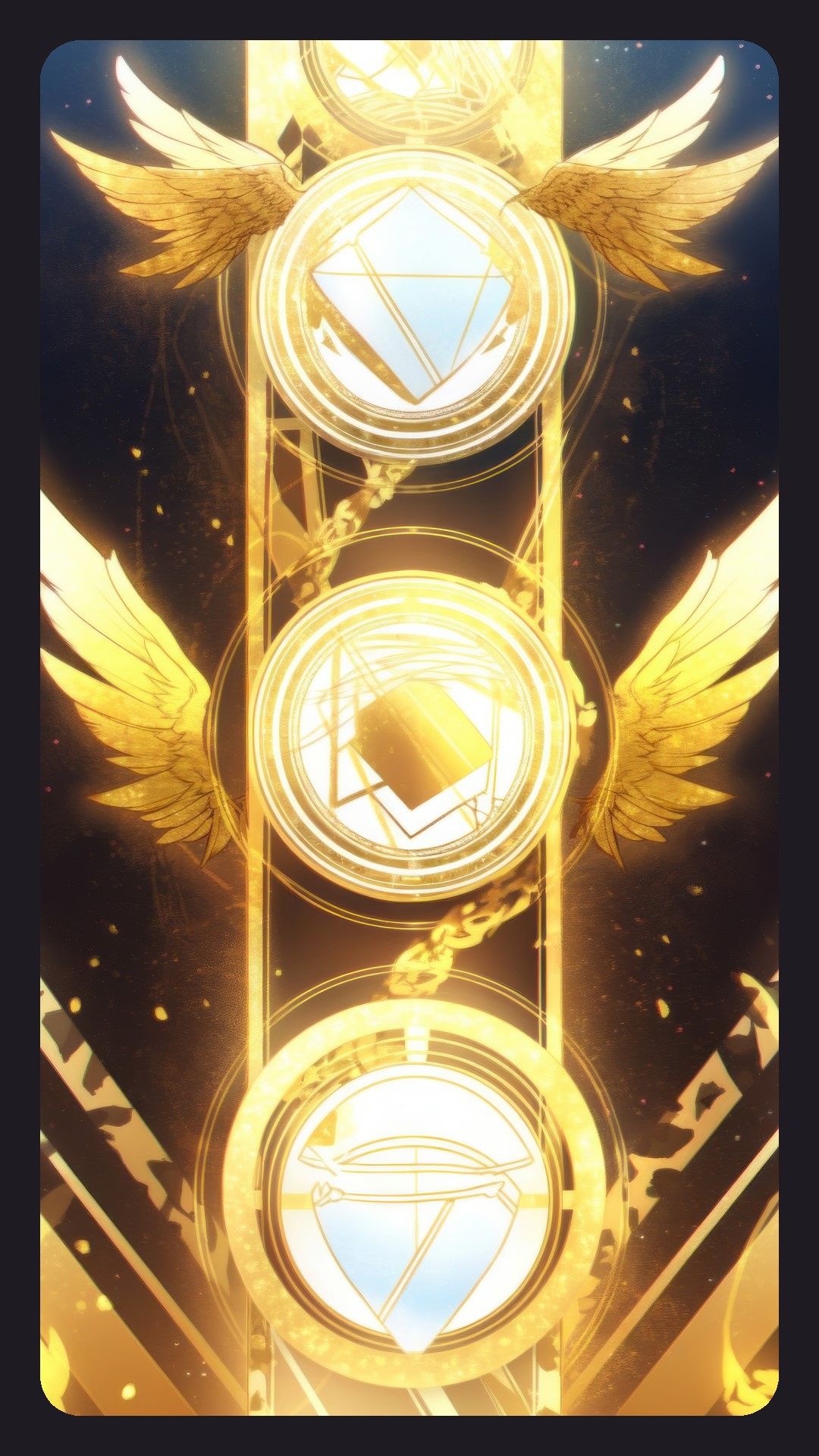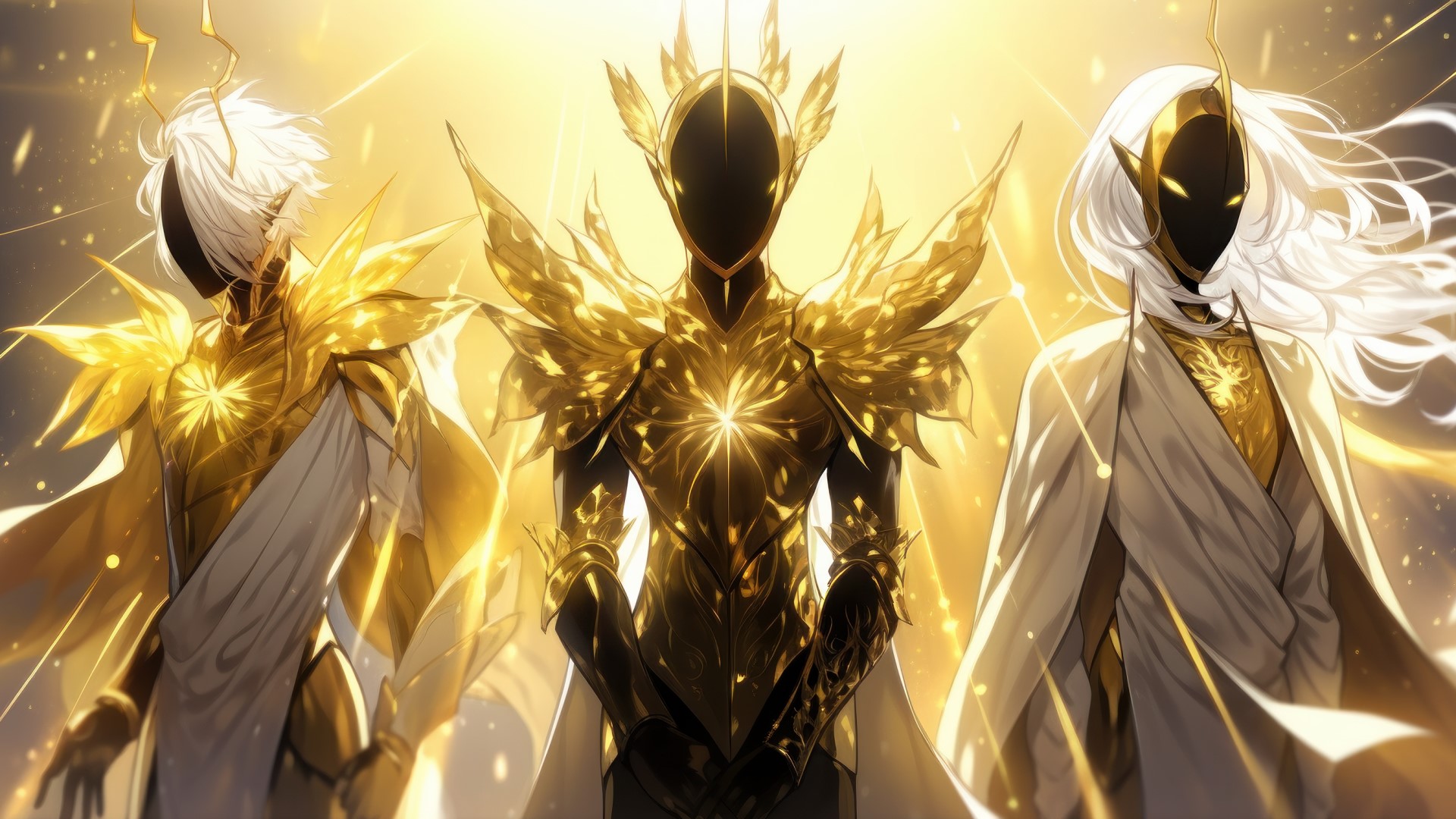The Rundic Three
The Rundic tendency to attribute actions and events to their gods baffles me.
The prosaically-named 'Rundic Three' is a religion originating from Rundheart and adopted primarily by humans. As the Aemark Kingdom formed under the rule of Markus the First, Rundic was unofficially established as the nation's religion due to his own faith and decreed official during his successor's reign. Today, the Rundic Three's nexus resides in Aemark while Rundheart became far more secular over the centuries.
 Common depictions of the Three resemble humans bathed in light; faceless and golden. Though individuals debate which of the Three is most important, official doctrine states they are balanced. The loss of any one results in the destruction of all. The mantra of Rundics is 'The Mind knows; the Spirit powers; the Body manifests.' Rundics in Aemark commonly attribute success to a blessing from one of the three gods.
Common depictions of the Three resemble humans bathed in light; faceless and golden. Though individuals debate which of the Three is most important, official doctrine states they are balanced. The loss of any one results in the destruction of all. The mantra of Rundics is 'The Mind knows; the Spirit powers; the Body manifests.' Rundics in Aemark commonly attribute success to a blessing from one of the three gods.
The Three Gods

The Rundic Three by SK Kage (via MidJourney)
Vlandun (of the Mind)
Vlandun is frequently portrayed androgynously with few features besides loose, white robes and a faceless, hairless head formed of light. The key characteristic of Vlandun is gleaming ring framing them from behind. Testaments describe interactions with Vlandun as almost mechanical, full of logic and thoughtful consideration. In many stories, Vlandun exposes believers to wisdom forcing them to confront difficult truths or divulge terrible secrets while Vlandun observes emotionlessly.Ayhlun (of the Spirit)
The Spirit, as they are sometimes called, is described as a hovering feminine form holding a circle of light at chest-level. Their face is covered by a hood and not shown (and, if depicted, heretical). In contrast to Vlandun and Drahkun, Ayhlun does not speak in scripture and instead imparts feelings and desires. Usually, the feeling is one of justice or a 'rallying ardor,' causing the individual to right a wrong or combat a vile enemy.Drahkun (of the Body)
Similarly faceless and steeped in light, the masculine Drahkun is rarely shown with any clothing over the torso and often entirely naked. As the icon of the Body, depictions of Drahkun form whatever is considered beautiful and/or perfection for the historical period. In centuries past, images of Drahkun were large and rotund, yet excessively strong. Currently, art shows them as lean, muscular, swift and agile, borrowing from the current perception of physical beauty and prowess. Ald Yvren scriptures detail stories where Drahkun inspires action and joins their followers in war. In all religious texts, Drahkun fights bare-handed, as though exemplifying that the body is the strongest weapon of all.Traditions and Rituals
The dominant sect within the Rundic Three is Ald Yvren, named after the leader of the Aemark Church, and sister to the King during the reign of Markus the Second. Ald Yvren promotes a strict set of daily rites as a sign of devotion and worship. In all but exceptional circumstances, these are observed at dawn and dusk. Rundics proceed through three rituals each time:- In observance of Vlandun (of the Mind), they empty their mind and adopt a meditative pose. Whispering the words 'Aen Vlandun,' they examine the distractions in their thoughts. Intrusions experienced over the preceding day are examined, acknowledged, and then removed. When the mind is focused on the present and on the tasks of the day (or to engender calm before resting), the Rundic states 'Vlandun Aen' to signal the end of the phase.
- In observance of Ayhlun (of the Spirit), the individual closes their eyes, while sitting, and imagines their energy exuding from their body. Similar to other sacraments, they start with the phrase 'Aen Ayhlun.' While most Rundics merely imagine themselves expelling power, wizards actively emanate a small amount of mana out of their mana vectors. The process is intended to 'even out' the spirit's will and establish a consistent baseline, finalizing with 'Ayhlun Aen.' For the non-magical, the ritual creates a sense of contentment, but for wizards prepares their mana pool for easier access and hones their ability to utilize mana vectors effectively and swiftly. Even non-Rundic wizards borrow this particular custom.
- In observance of Drahkun (of the Body), Rundics move through a sequence of poses stretching and straining the body in preparation for the day or to relax before rest. The postures are not explicitly defined, but many Rundics engage in them as a group, following a more experienced and knowledgeable Rundic, such as a priest. For each, they breathe in 'Aen Drahkun' at the beginning, concentrate on the stretched muscles for a period, and then breathe out 'Drahkun Aen.' Most practitioners pose between six and ten times, but religious leaders may extend their ritual to dozens.
The Spirit Powers
Need a hard-hitting, strong liquor after a hard day's work? Spirit Powers provides the strongest ales and liquors available! I thought they were shut down by the Church for heresy. Might be an old ad...Faith and Religion
Written by Sheyla Enelladalcol Aeleat
Edited by Shikya Enelladalcol Aeleat
Mindcepts by Ella Enelnasalcol Malric
Edited by Shikya Enelladalcol Aeleat
Mindcepts by Ella Enelnasalcol Malric
and Alvix Tuvar


Comments